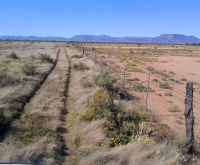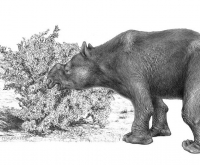Upside (Drawdown): The Potential of Restorative Grazing to Mitigate Global Warming by Increasing Carbon Capture on Grasslands - An Emerging Narrative
You are here
Holistic Management
The Promise of Restorative Grazing
The Center for International Environment and Resource Policy (CIERP) hosted Seth Itzkan, President of Planet-TECH Associates, on October 30 for a talk entitled “Climate Mitigation 2.0 – The Promise of Restorative Grazing: Counter-Intuitive Approaches for Reversing Desertification and Global Warming While Meeting Human Needs.”
Holistic Management and Water Restoration
Improving water availability is a key reason for doing Holistic Management around the world. This is particularly true in semiarid regions where water access is often scarce. As soils are restored, water tables are replenished, rivers will run longer, and surface pools will stay longer into the dry season.
Regarding Holechek and Briske, and Rebuttals by Teague, Gill & Savory
This paper investigates the grazing management assessment reports authored by Briske (2008), and Holechek (2000) in light of their claims regarding methodologies for grassland restoration advocated by Allan Savory. Rebuttals to the Briske and Holechek conclusions are provided by Teague et al. (2008), Gill (2008, 2009a, 2009b, 2009c), and Savory (2000).
Talking Points Regarding Savory
The evidence in support of Holistic Management, both scientific and empirical, combined with the heightened emergency of global warming, makes inquiry into this methodology essential. To ignore the merit and potential of this innovation now, or to succumb to vitriol, would be a dereliction of our duty as stewards of this planet.
Land Restoration with Holistic Management
Examples of land restoration using Holistic Management. Pictures from South Africa, Mexico, Zimbabwe & Namibia.
Holistic Management Reading & Video Resources
A list of articles and videos that discuss Holistic Management and / or Allan Savory.
Prince Charles Endorses Allan Savory
Prince Charles comments on Allan Savory and his integrated approach to ranching and farming, and the role ruminants for the health of grasslands. Segment from speech given by the Prince to the IUCN World Conservation Congress. Full video clip is here, http://www.youtube.com/watch?v=IZhep_8aCNQ.
Worldwatch Nourishing Planet Interview with Seth Itzkan - Published
Here's the published version of the Worldwatch Nourishing The Planet interview with Seth Itzkan. Please see the Worldwatch site to comment.
Worldwatch Nourishing Planet Interview - Extended
Here's the full written response by Seth Itzkan to the Worldwatch Nourishing The Planet Interview questions. An edited version appeared on the Worldwatch blog.
The Interconnectedness of Nature: Truffles in the United States and Australia
In analyses of land management practices, people often focus on what we see above the ground as a sign of the health of the land. However, as scientists are discovering, and as I am coming to understand more and more in my research, what is below the ground is often just as important.
Megafauna and Changing Grasslands in Australia
Increasing evidence is showing that the extinction of megafauna causes major changes to grasslands in Australia. Megafauna once played an essential role in the health and survival of grasslands.
Fletcher Presentation: Reversing Global Warming and Desertification with... Livestock?
On January 25th I spoke at Tufts University regarding Holistic Management and my experiences in Africa.
TEDx Somerville: Reversing Global Warming with Livestock?
Seth Itzkan gives a talk on Holistic Management at TEDx Somerville, March 2012. Title of the talk is Reversing Global Warming With Livestock?
Las Pilas Ranch: A Tale of Restoration
The Las Pilas Ranch in Coahuila, Mexico, is a model of ecological restoration using Holistic Planned Grazing. Over a forty year period from 1963 to 2003, the barren landscape was completely revived.
A Global Strategy for Addressing Global Climate Change
Excerpts from: A Global Strategy for Addressing Global Climate Change, by Allan Savory
Holistic Management Workshop: Day 1
You probably think of small time dairy farming as an idyllic 18th century occupation with Amish practitioners far removed from contemporary science, politics, and economics. Well, in certain ways, in may be idyllic, but it here at Hendricks Farm in Telford, Pennsylvania, this family run business is no laggard. They are setting a precedent for how to run a farm that is ecologically restorative, profitable, and fun to be around. Without the use of pesticides, hormones, or grain feed, they are raising healthy cows while growing grass and replenishing the soils that were devestated by the th
Jim Laurie's Texas Soil Restoration Visit
Photos from Jim Laurie's soil restoration explorations in West Texas.
Soil Presentation at Stockholm Environment Institute, 2009
The presentation explores the role of grasslands restoration as a key component for climate change mitigation.















